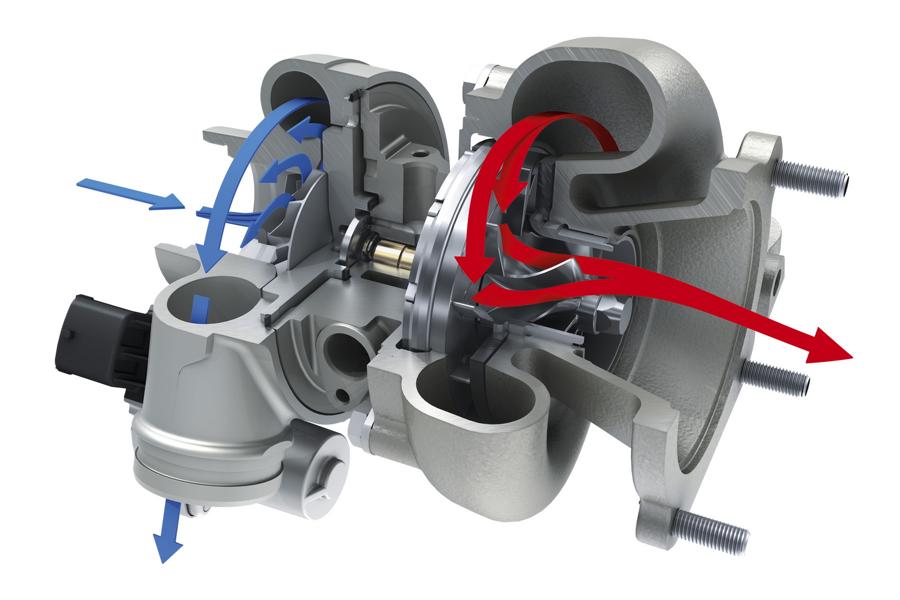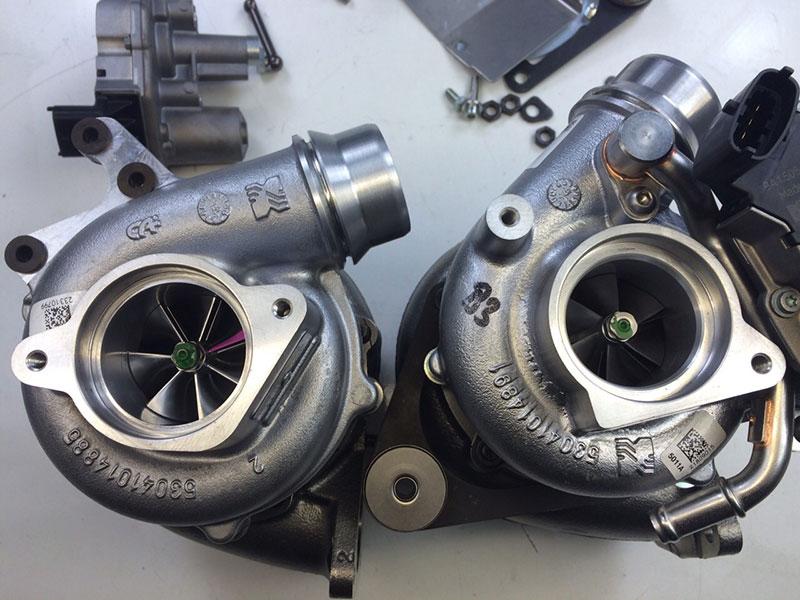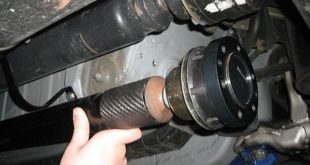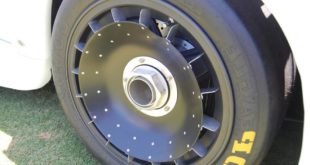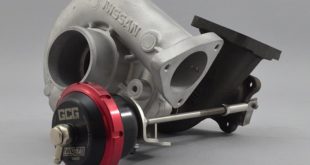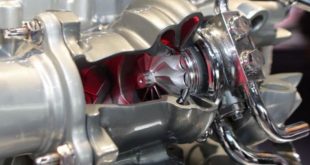Recently updated on September 26, 2020 at 10:33 am
The abbreviation VTG stands for variable turbine geometry and is actually nothing new. It was developed by Borg Warner for use in the Porsche Turbo ten years ago. Now the technology is about to break through in the petrol engine. Porsche AG gave the commission the freedom to use high-temperature-resistant materials in the development of the VTG loader, which were too expensive for the mass market. Advanced developments of the gasoline engine today allow lower temperatures, so that the use of highly sensitive variable turbine geometry loaders are also suitable for the mass market. The control by the variable turbine geometry is very advantageous for modern gasoline engines, as this economical operating methods, for example. The Miller cycle are driven and a combination with electric drive components can be made possible. The VTG loader enables particularly fast response and operation with very low exhaust gas flow rates. Low exhaust backpressure and a long transmission ratio make savings potential possible. Longer gear ratios are possible due to the faster torque build-up.
Further development in the TSI engine
By optimizing the design and the material used, Borg Warner nevertheless increases the resistance of the VTG loader to withstand the high thermal loads. Furthermore, a robust electric actuator was implemented in the VTG technology, which regulates the pressure of the turbine. The angle of attack and the speed at the inlet of the turbine wheel are changed by means of the adjustable guide vanes. This allows the performance of the turbines to be controlled. In the lower speed range is then not only an increase in efficiency but also a faster response. The new 1.5 liter four-cylinder engine from VW (internal designation EA 211 TSI evo) receives the new VTG loader first. Borg Warner is not the only manufacturer Honeywell and Bosch Mahle Turbo Systems have already announced VTG loaders. Therefore, it can be assumed that several models are equipped with this technology.
Hibernation of the VTG loader
The adjustable vanes lead in the idle state, the exhaust gases obliquely to the exhaust flange. The turbine of the supercharger is hardly driven. Thus, the build-up of boost pressure is very low. There are wide flow cross-sections between the ladder blades, whereby a low exhaust back pressure of the VTG supercharger is very low. This position of the vanes is also referred to as open.
Low speeds
The variable vanes are rotated to a tangential position when the engine is idling or at low engine speeds, so that the VTG loader is given a maximum negative pressure. For the exhaust gases, only narrow nozzle-like cross sections are available, which is why they are greatly accelerated. The result is an exhaust vortex with high rotational speed in the housing of the turbine, which transmits a high torque to the turbine. Wastegate loaders of the same size can not build such a high torque in comparison. However, VTG loaders also produce higher exhaust back pressures. This position of the vanes is also referred to as closed.
Tuning on the VTG loader
Like the wastegate charger, a VTG turbocharger can also be modified. In principle, individual components can be improved here, such as the adjustable guide vanes at the turbine inlet or the turbine and compressor wheel. An optimized VTG turbocharger can even close the hardly existing turbo lag completely and generates improved engine torque in the lower and upper speed range. In the best case scenario, with a tuned VTG turbo, the pollutants in the exhaust gas are further reduced over the entire engine speed range. However, in order for the VTG charger to work correctly, it must be calibrated. A precise fine adjustment is made by means of flow measurement, which is also called "flow bench calibration". We hope that you the info report on the term VTG turbochargers from the field of autotuning. Our goal is that the largest German-language tuning dictionary (Tuning Wikipedia) and to explain tuning terms from A to Z easily and understandably. Almost every day we expand this encyclopedia and how far we are already can you HERE see. Soon the next one will be Tuning scene concept be illuminated by us. Incidentally, you will be informed about new topics if you have ours Feed subscribe to. PS: You can find even more information in our large turbocharger special!
Below are a few examples from our tuning lexicon:
But of course tuningblog has countless other articles on the subject of cars & car tuning in stock. Do you want to see them all? Just click HERE and look around. But we also want to provide you with news outside the tuning. In our category Tips, products, information & Co we pick up contributions from car or accessory manufacturers. And also our category Test sites, laws, offenses, information has almost daily new information for you. Here are a few topics from our tuning wiki:
|
What is a wastegate (bypass valve) and what do you need it for? |
"Tuningblog.eu" - we keep you up to date on the subject of car tuning and car styling with our tuning magazine and present you the latest tuned vehicles from all over the world every day. It's best to subscribe to ours Feed and will automatically be informed as soon as there is something new for this post, and of course also to all other contributions.
 tuningblog.eu Your magazine about tuning the car
tuningblog.eu Your magazine about tuning the car
